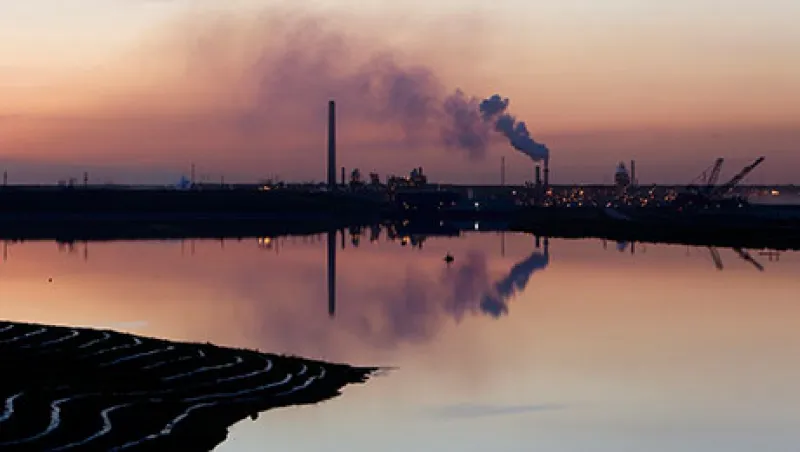Commodity price movements will dramatically reverberate through an economy in which oil, gas and mining make up nearly 30 percent of the gross domestic product. That’s the case in eastern Canada’s Atlantic provinces, where declining oil prices have recently had a major impact.
In recent years the Atlantic provinces— New Brunswick, Nova Scotia, Prince Edward Island and Newfoundland and Labrador — started to see some economic green shoots fueled by high oil prices, after years of suffering from a dwindling and aging population; a fading fishing industry; and, compared with the rest of Canada, weak political influence in Ottawa. But then came the dramatic fall in oil prices in July 2014, leaving provincial governments reliant on offshore drilling with gaping holes in their accounts — especially in Newfoundland and Labrador.
Falling oil royalties have put Canada’s easternmost province on track to run a record-high C$1.1 billion ($893.4 million) deficit this year. Analysts such as Patrick Brannon, director of major projects with the Atlantic Provinces Economic Council (APEC), an economic research nonprofit in Halifax, Nova Scotia, expect that the provincial government of Newfoundland and Labrador will have to pare back public employment rosters and hike the harmonized sales tax to help ease the funding gap. Whereas the province expects oil prices and royalties to recover over the medium term, there is still a long way to go before the Atlantics will see recovery. In fact, the Newfoundland and Labrador government anticipates running a deficit through the 2019–’20 fiscal year, largely because of stalled or delayed investment in major projects in the region.
In its May report, Major Projects 2015: Commodity Prices Slow the Pace of Development, APEC notes that the two largest energy projects in the province — offshore oil field Hebron, located in the Jeanne d’Arc Basin 217 miles south of the provincial capital of St. John’s, and hydroelectric project Muskrat Falls, located along the lower Churchill River in Labrador — are set to reduce output in the face of the oil slump. Overall, APEC estimates inflows to major energy projects in Newfoundland and Labrador to decline by some 14 percent in 2016. Although investment is expected to be about C$7 billion, still a solid amount for the province, it is down from its peak of C$9 billion, reached in 2014. “Newfoundland is cresting its capital pipeline,” says Gerard Walsh, an economist at Royal Bank of Canada in Toronto. “They had a lot this year. But going forward, they will have less and less as major projects wrap up.”
For consumers in Newfoundland and Labrador, oil is likely to be a “net negative,” says Walsh. Unlike other oil-producing provinces such as Alberta, where, despite the falloff in prices, unemployment remains well below Canada’s national average, Newfoundland and Labrador’s jobless rate is already elevated. Any extra spending power is likely to get absorbed by a reduction in payrolls.
“One of the things we are calling for is for the federal government to step up and restimulate the economy, like they did during the last recession,” says Brannon. There are indeed mechanisms to keep the region afloat. The federal government could shift equalization payments back to Newfoundland and Labrador if the oil price decline continues over the long term. In 2008 Newfoundland and Labrador became a contributor to the financing meant to address the imbalance between Canada’s rich and poor provinces for the first time in its then six decades since becoming part of Canada. (Incidentally, these payments have been a particular gripe among fringe groups in Alberta calling for the oil-rich province to secede from the rest of Canada.) The Ottawa government could also inject needed capital into the region to sustain everyday outlays, such as for infrastructure. In April, for example, the federal government committed C$5.7 million in funding to Prince Edward Island for the national highway system — where, in fact, the oil production outlook shows promise.
According to the APEC report, project investment in Prince Edward Island could increase by as much as 8 percent, especially if plans for electricity transmission cables to the island come to fruition. In nearby Nova Scotia, oil majors such as Shell stand to increase project spending by as much as 20 percent next year on offshore oil exploration, according to APEC. In terms of the consumer, lower oil prices have helped spur spending. APEC reports retail sales growing by 3 percent in February in Nova Scotia and 6.4 percent in the fellow Maritime province of New Brunswick.






